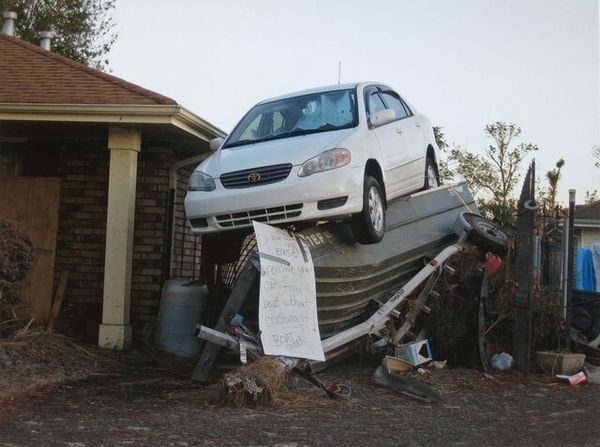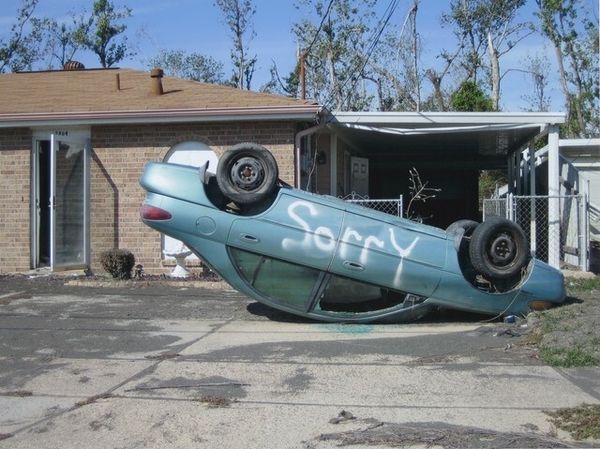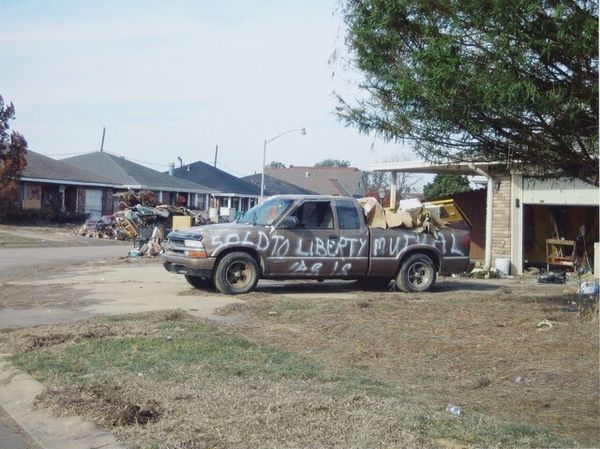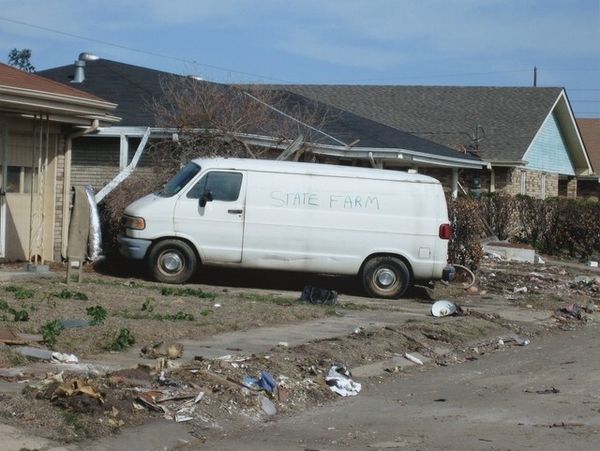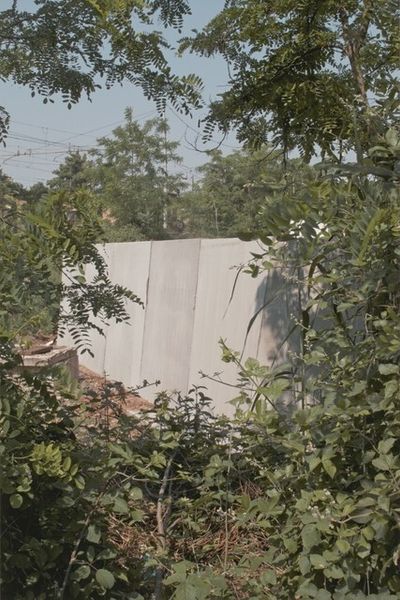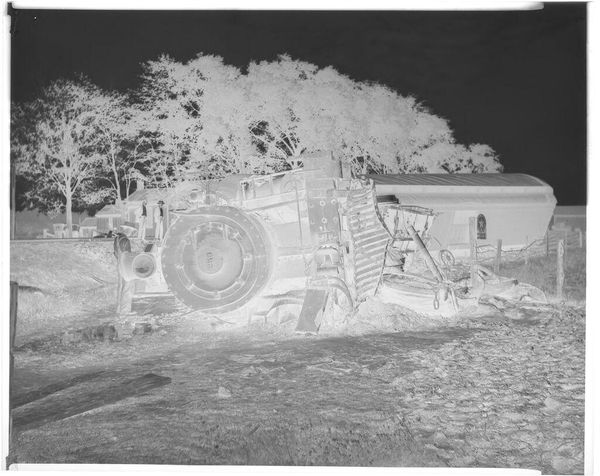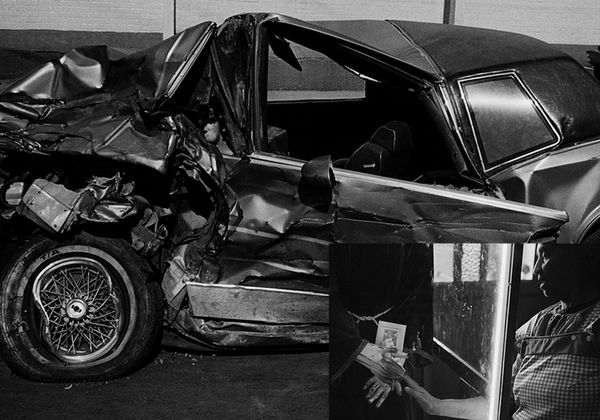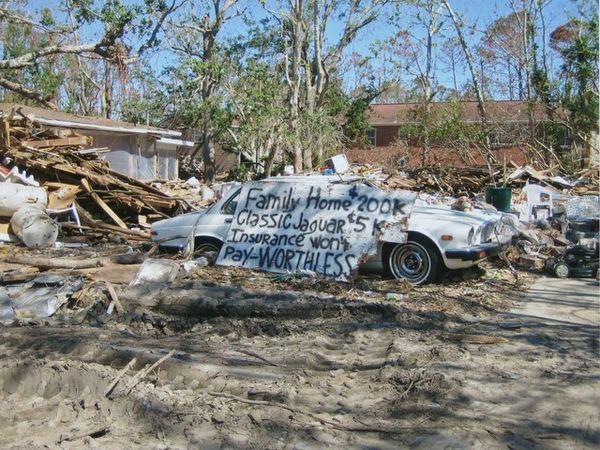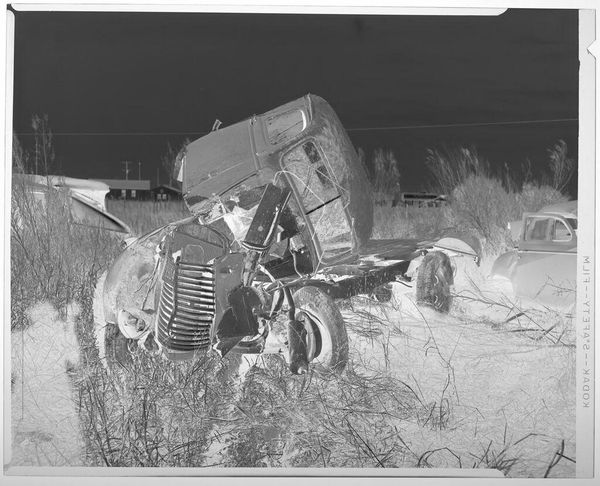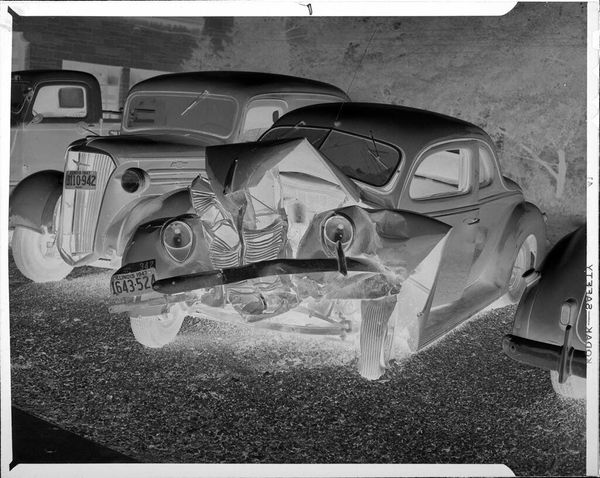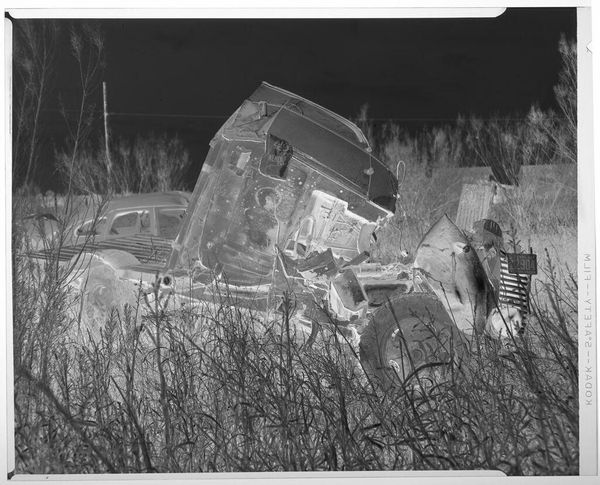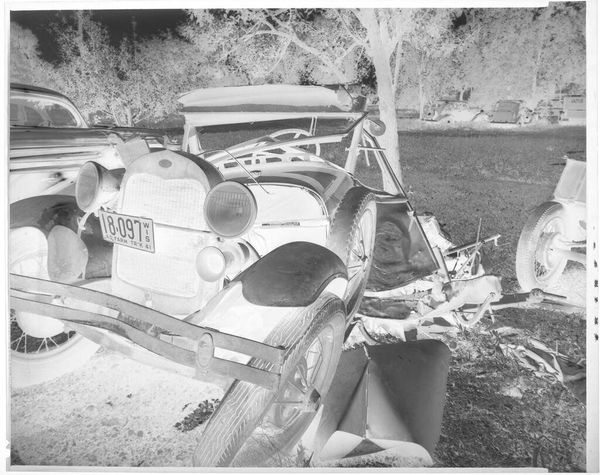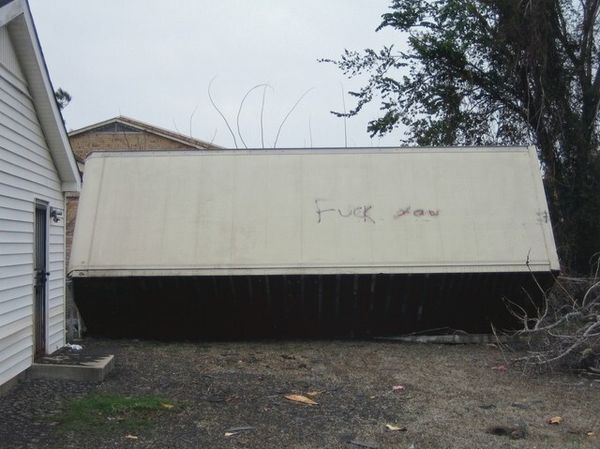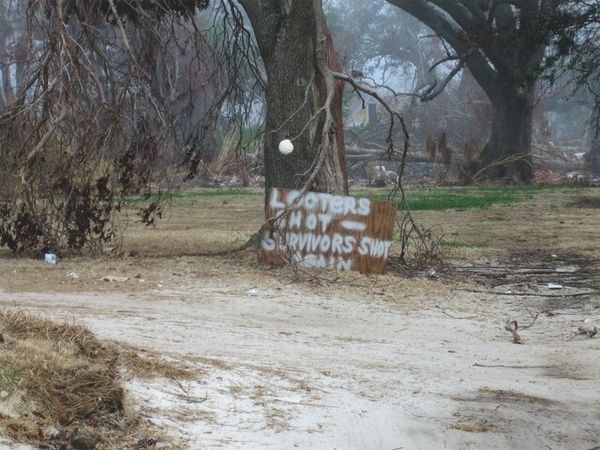![Untitled [New Orleans and the Gulf Coast, 2005] by Richard Misrach](/_next/image?url=https%3A%2F%2Fd2w8kbdekdi1gv.cloudfront.net%2FeyJidWNrZXQiOiAiYXJ0ZXJhLWltYWdlcy1idWNrZXQiLCAia2V5IjogImFydHdvcmtzL2ExMTljYjJmLTgzNmEtNDQwZi1iMjc2LTZjNTE1ZmJjOWNkNS9hMTE5Y2IyZi04MzZhLTQ0MGYtYjI3Ni02YzUxNWZiYzljZDVfZnVsbC5qcGciLCAiZWRpdHMiOiB7InJlc2l6ZSI6IHsid2lkdGgiOiAxOTIwLCAiaGVpZ2h0IjogMTkyMCwgImZpdCI6ICJpbnNpZGUifX19&w=1920&q=75)
Untitled [New Orleans and the Gulf Coast, 2005] Possibly 2005 - 2010
0:00
0:00
Dimensions: image: 27.62 x 36.83 cm (10 7/8 x 14 1/2 in.) sheet: 28.89 x 38.1 cm (11 3/8 x 15 in.)
Copyright: National Gallery of Art: CC0 1.0
Curator: Richard Misrach's Untitled work, dating from possibly 2005 to 2010, from his New Orleans and Gulf Coast series. A sobering tableau, wouldn't you say? Editor: Sobering is an understatement. The composition immediately strikes me with its stark, almost brutal arrangement. The car is this gleaming white, oddly clean amidst the drab landscape. The vehicle's awkward angle generates incredible tension, doesn't it? It feels almost staged. Curator: Exactly! This image serves as a potent document of the aftermath of Hurricane Katrina. We see this expensive SUV submerged in what appears to be a canal, with graffiti scrawled across it, symbolizing not only physical ruin, but also a sort of societal breakdown after a natural disaster. It implicates our obsession with wealth, prestige, and security. Editor: Yes, that jarring juxtaposition is undeniable. And while you are placing emphasis on social context, from a strictly compositional perspective, note the diagonal lines of the car cutting through the horizontal lines of the canal's edge. It disrupts the visual harmony, highlighting disruption in the social sphere as well. The color palette is fairly restricted, really just whites, browns, and greens, further enhancing the sense of desolation. Curator: And consider how this imagery circulated! Misrach’s choice to capture and present this scene contributes to the visual memory of the hurricane. The photograph forces us to confront the systems that failed, and whose failures disproportionately affected marginalized communities. The graffiti reads almost like a desperate cry. Editor: True, though from an aesthetic perspective, graffiti acts as expressive markings interrupting the pristine surface of a vehicle. In some ways, it undermines its commodity value. This visual anarchy gives the image energy it would otherwise lack. I see this in contrast to the coldness and formality in other parts of the frame. Curator: Indeed, the formal choices underscore the sociopolitical reality of post-Katrina New Orleans. It reveals much about what happened when the floodwaters receded and what was left behind, not just physically but also politically. Editor: The composition is an uncomfortable mirror of social commentary. It reflects disaster as visual discord, a brutal still life pieced together from devastation. I found that to be extremely captivating. Curator: Ultimately, Misrach urges us to reckon with the complex intersections of nature, society, and representation, reminding us of the stories we choose to tell, and the ones we often leave untold.
Comments
No comments
Be the first to comment and join the conversation on the ultimate creative platform.
